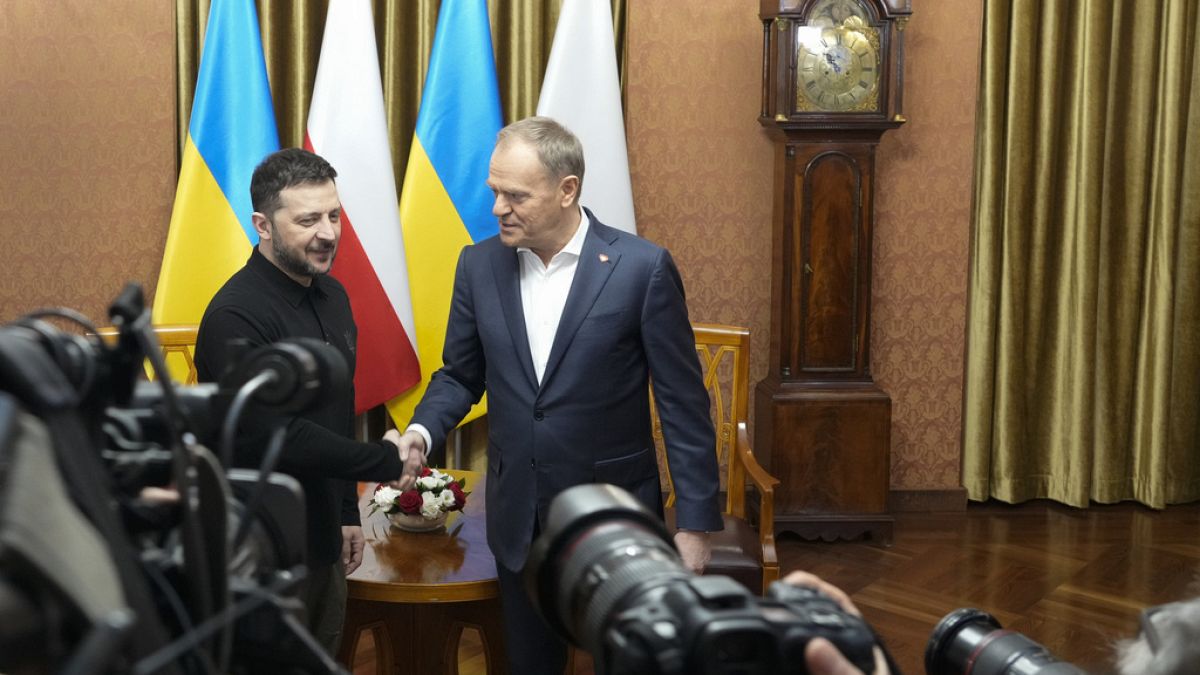Europe
Poland and Ukraine organise exhumations of WWII-era victims

Building Bridges Through Shared History: The Exhumation Efforts in Volhynia and Polish-Ukrainian Relations
Introduction: A Step Toward Healing
In a bid to mend strained relations, Polish and Ukrainian officials have embarked on a historic collaboration: the exhumation of victims from the Volhynia massacres of 1943. This effort marks a significant step toward addressing a painful chapter in their shared history, which has long been a source of tension. The initiative, agreed upon last month, aims not only to uncover the remains of those tragically killed but also to foster mutual understanding and reconciliation between the two nations. By working together, Poland and Ukraine hope to honor the memories of the victims and pave the way for a more harmonious future.
The Volhynia Massacres: A Dark Chapter in History
The Volhynia massacres, carried out by the Ukrainian Insurgent Army (UPA) during World War II, left deep scars on both Poland and Ukraine. In 1943, the UPA, which had collaborated with Nazi Germany, orchestrated a series of brutal attacks in the Volhynia and Eastern Galicia regions, then under German occupation. The violence resulted in the deaths of an estimated 100,000 Polish civilians, as well as numerous members of other ethnic groups, including Armenians, Jews, Russians, Czechs, and Georgians. These events have been a contentious issue, with Poland officially recognizing them as a genocide, while Ukraine views the conflict as a complex, multi-sided tragedy with shared responsibility. The differing perspectives have long complicated bilateral relations, but the exhumation process offers a chance to confront the past together.
Moves Toward Reconciliation: The Exhumation Process Begins
After months of preparation, the exhumation of a mass grave in Western Ukraine is set to commence. Ukrainian Ambassador to Poland, Vasyl Bodnar, recently confirmed that all necessary permits have been issued, allowing the process to move forward. The site in question is located in the village of Puzhnyky, where a burial pit was discovered in 2023. A team of Polish and Ukrainian experts will collaborate on the exhumation, with Polish Minister of Culture and National Heritage, Hanna Wróblewska, emphasizing the importance of this joint effort. While the exact timeline is still being finalized, both sides are aiming to begin the work in the spring, with hopes of starting as early as April. The process will be conducted with the utmost respect for the victims, ensuring their dignity and proper commemoration.
A Collaborative Effort: Combining Expertise and Resources
The exhumation process is not only a chance to uncover the truth about the past but also an opportunity for scientific collaboration. Polish and Ukrainian experts will work together to conduct DNA analyses, determine the causes of death, and ascertain whether the victims died as a result of violence. This multinational effort is supported by several Polish organizations, including the Freedom and Democracy Foundation, the Institute of National Remembrance (IPN), and the Pomeranian Medical University in Szczecin. While these groups will play a crucial role, Minister Wróblewska has stressed that the initiative must remain a joint undertaking between Poland and Ukraine. By combining their expertise and resources, both nations can ensure that the process is thorough, respectful, and conducted with the highest scientific standards.
Beyond the Exhumations: The Broader Implications for Polish-Ukrainian Relations
The exhumation process is more than just a historical exercise; it holds the potential to transform Polish-Ukrainian relations. For decades, the legacy of the Volhynia massacres has cast a shadow over the two countries’ otherwise strong alliance. Poland’s recognition of the events as a genocide has been a point of contention, as Ukraine prefers to view the conflict as part of a broader, more complex narrative. However, by working together on this sensitive issue, both nations can take a significant step toward reconciliation. The collaboration not only honors the victims but also demonstrates a shared commitment to addressing the past in a spirit of mutual respect and understanding. As officials from both sides have made clear, patience and good faith will be essential in navigating this delicate process.
Conclusion: A Path Forward Through Shared Effort
The exhumation efforts in Volhynia represent a meaningful step toward healing the wounds of the past and strengthening Polish-Ukrainian relations. By collaborating on this important initiative, both nations can move beyond their historical differences and work toward a more unified future. The process is not without its challenges, but the willingness of both sides to engage in open dialogue and joint action offers hope for progress. As Minister Wróblewska has urged, it is essential to approach this effort with patience and to avoid sensationalism or manipulation. Together, Poland and Ukraine can ensure that the memories of the victims are honored with dignity and that their legacy serves as a foundation for greater understanding and cooperation in the years to come.